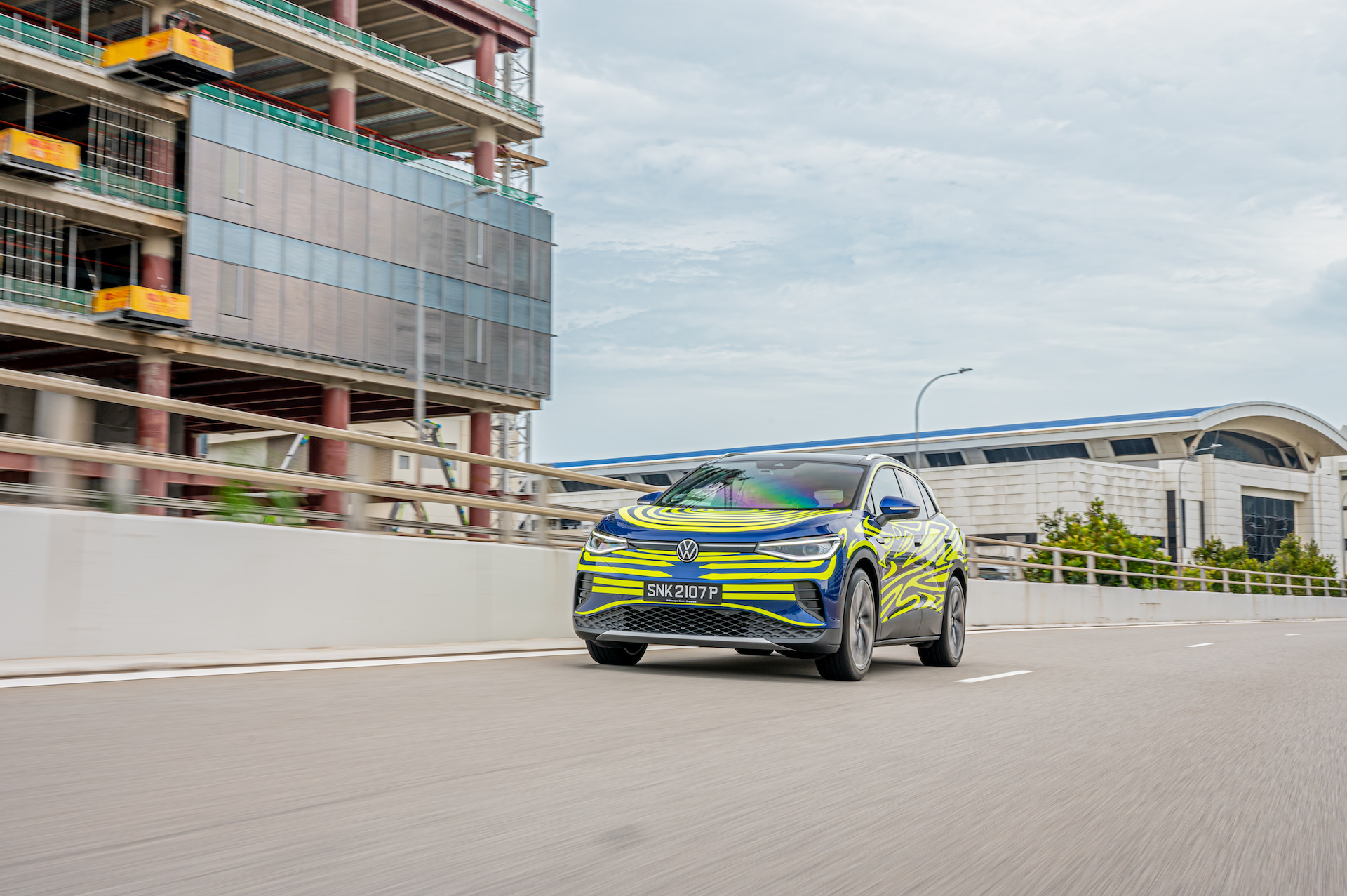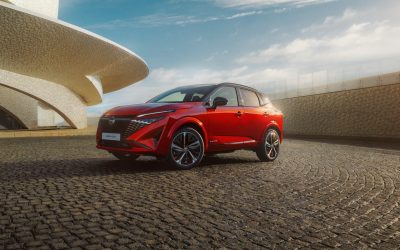The new electric kid on the Volkswagen block is here, but does the ID.4 impress?
The Volkswagen ID.4 is the latest addition to the VAG family, built upon the new Modular Electric Drive Matrix (MEB) platform. It won’t go on sale till Q1 of 2024, but Volkswagen Group Singapore has kindly allowed me to have a sneak peek.
There were two ID.4 models on test that morning – the regular skimmed milk variant, and the full-fat GTX, with its acronym denouncing that it’s the sporty athletic sibling of the two.

Let’s get straight to the juicy bits, shall we? The regular ID.4 has a single rear motor setup, boasting 201bhp (150kW) and 310Nm of torque at your disposal. Not too shabby for most people, but unlike its rear-motor counterparts, the ID.4 GTX boasts an additional motor upfront, elevating the power output to 295bhp and a respectable 460Nm of torque.
Both cars have a 77kWh battery, giving both cars about 480km (WLTP) of range, which should suffice for a week’s worth of adventures.

Both cars deliver smooth and restrained drives, and despite the power advantage of the GTX, it’s clear that Volkswagen is committed to the ethos of the I.D. cars being people’s electric vehicles. I say it’s a good thing though, as it provides first-time EV users with a good introductory base to the world of instant torque, instead of the usual neck-snapping routine.
And the user-friendly experience continues on into the cabin. Starting the vehicle is as simple as flopping into the driver’s seat with the key – no need to fumble with ignition switches. Just pop it in ‘D’ and you’re good to go, thanks to weight sensors in the seats.

I can give a pass on the regular ID.4 for being soft in the corners, but the GTX doesn’t evoke the same dynamic prowess we commonly associate with ‘performance’ Volkswagen cars. The ID.4 GTX’s steering is light, quick, and precise, but it lacks the communicative nature one craves when pushing the limits.
The brakes take time to get used to as well, a trait shared with the Škoda Enyaq. It seems the regenerative braking system’s programming contributes to a substantial dead zone before the brakes engage fully.
For those who are not used to using regen braking, it might feel as though the brakes lack the strength to bring the car to a halt. However, these idiosyncrasies can be easily mastered over a few short drives around town. After all, these cars are a departure from their conventional internal combustion (ICE) engine counterparts.

What is a big departure too are the exteriors of the cars. The I.D. models boast sleek and flowing exteriors, and this isn’t a mere stylistic whim.
The ID.4’s aerodynamic prowess shines through with an extremely low drag coefficient of 0.28 – important in a car that needs to conserve energy whenever it can.


Stepping inside the ID.4 reveals another facet of its sustainable vision, featuring vegan ArtVelours seat covers. The interior exudes elegance and modernity, housing a floating digital cluster with the gear selector located to its right. Ventilation vents sit low on the rear floor, fostering an airy ambience within the cabin.
The cabin offers a spacious and comfortable sanctuary for its occupants, ideal for its designated city-cruiser role. Boot space is also handy at 543 litres.
As befits a forward-thinking offering, both variants of the ID.4 come equipped with an array of features and driver assists, including adaptive cruise control, Dynamic Chassis Control (DCC), and more.

As of now, there’s no word on the ID.4 GTX’s expected pricing, and even the specifications are subject to refinement. However, those who are interested can expect to register their interest later this year.
Photo credits: Volkswagen Singapore
Read more automotive news at AutoApp, or check out our latest videos on Ignition Labs TV!






